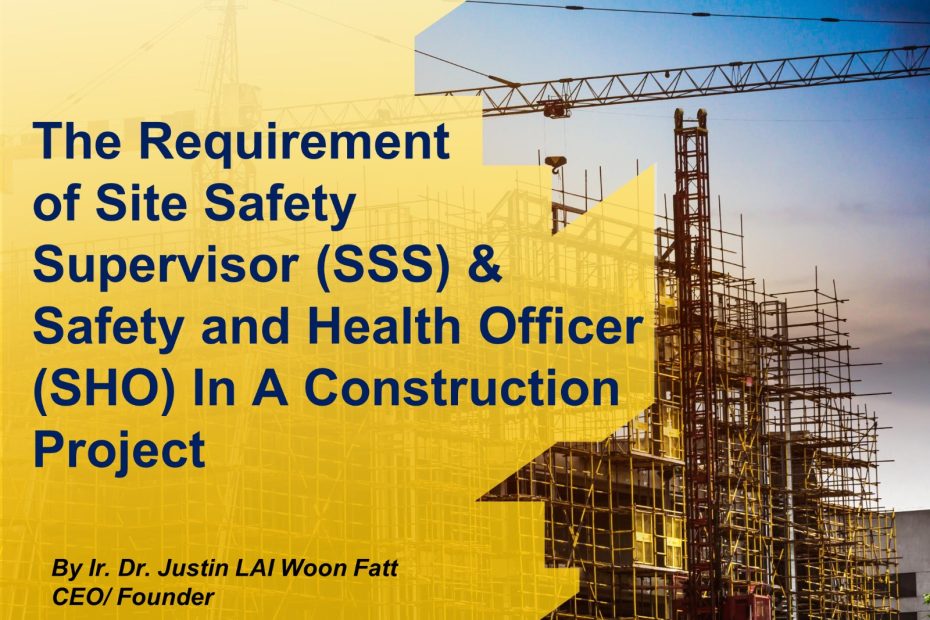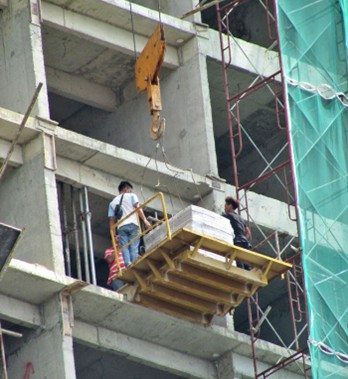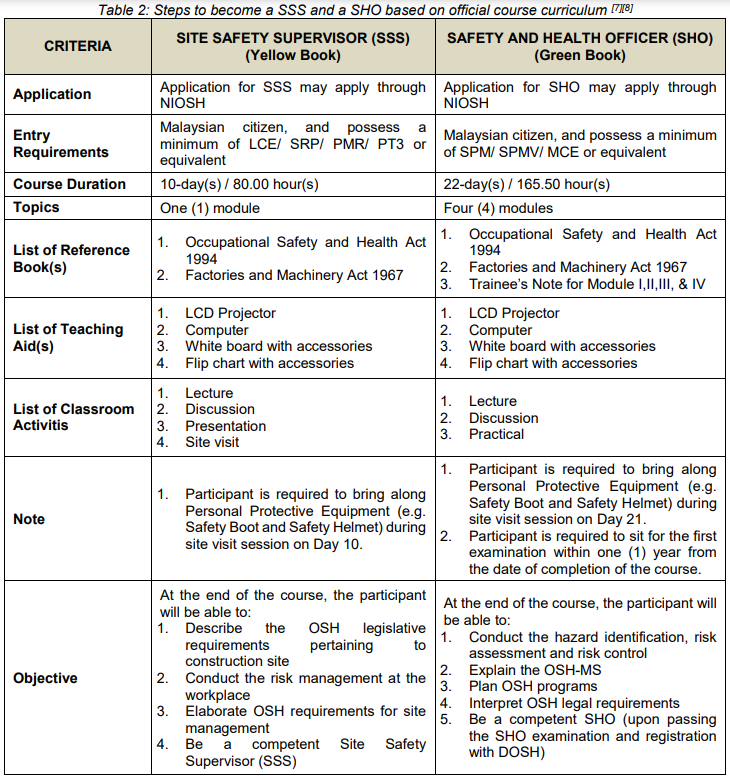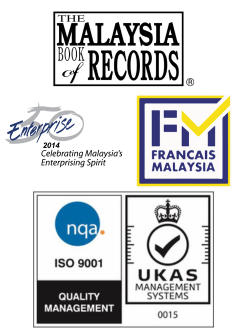Author: Ir. Dr. Justin LAI Woon Fatt | 28 April, 2025
In the construction industry, safety is the most crucial element in ensuring that every project is carried out smoothly without any risks that could jeopardize workers or the project’s progress. Construction sites involve various high-risk activities, such as working at heights, operating heavy machinery, and handling hazardous materials. Therefore, adherence to all safety regulations, without exception, is essential to minimize the likelihood of accidents on-site.
Importance of SSS and SHO
To ensure that all safety measures are complied with, the appointment of a Site Safety Supervisor (SSS) and/or a Safety and Health Officer (SHO) is required, depending on the scale of the project, the number of workers involved, and the level of workplace risk. An SSS is responsible for overseeing safety compliance in small to medium-scale projects, whereas an SHO is required for larger and more complex projects to ensure full adherence to laws and safety guidelines set by regulatory authorities. With proper supervision and enforcement by an SSS and/or SHO, potential risks can be identified early, and preventive measures can be implemented to safeguard workers’ safety and maintain the smooth execution of construction projects.
When workers carry out tasks on-site without the presence of an SSS and/or SHO, the likelihood of non-compliance with safety regulations increases significantly. This lack of supervision may lead to unsafe work practices, putting workers in hazardous situations that could result in serious injuries or fatalities. Figure 1 below shows workers failing to adhere to the use of Personal Protective Equipment (PPE) while working at heights, posing a risk of falling that could result in fatal injuries or death, caused by the lack of supervision from an SSS and/or SHO.
Differences between SSS and SHO
Although the main function of both the SSS and SHO is to ensure compliance with all safety aspects on-site, there are significant differences in their regulatory requirements, scope of responsibilities, and job functions. Table 1 outlines the key distinctions between the two roles in terms of their requirements and responsibilities.
Application of SSS and SHO
SSS and SHO are professionals who are expected to have a comprehensive understanding of safety laws. This is because the process of becoming an SSS or SHO involves several rigorous steps to ensure they are well-equipped with the necessary knowledge and skills. Before qualifying, candidates must complete a series of structured training programs, including attending mandatory courses that cover various aspects of workplace safety and legal compliance. Table 2 provides a detailed overview of the step-by-step process required for an individual to meet the qualifications and officially become an SSS or SHO.
Conclusion
The roles of the Site Safety Supervisor (SSS) and Safety and Health Officer (SHO) highlight that workplace safety is not just a regulatory requirement but a vital element for the success of any construction project. While the SSS focuses on daily site practices and the SHO oversees broader policy compliance, both work toward a common goal which is a safe and hazard-free environment. Their combined efforts reduce risks, prevent delays, and ensure legal compliance, ultimately enhancing project efficiency and safeguarding worker well-being.
Ir. Dr. Justin LAI Woon Fatt
CEO/ Founder
IPM Group
References:
[1] Consumers’ Association of Penang. (2019). Jabatan Keselamatan dan Kesihatan Pekerjaan gagal mengawasi ketidakpatuhan keperluan keselamatan di tapak kerja. Retrieved on 28th April 2025 from https://consumer.org.my/ms/jabatan-keselamatan-dan-kesihatan-pekerjaan-gagal-mengawasi-ketidakpatuhan-keperluan-keselamatan-di-tapak-kerja/
[2] Jabatan Kerja Raya (JKR). (2011). Specifications for Occupational Safety and Health for Engineering Construction Works 2011. Retrieved on 28th April 2025 from https://www.jkrperak.gov.my/images/PDF/ARAHAN_KPKR/Arahan_KPKR_012012.pdf
[3] Department of Occupational Safety and Health. (1997). Occupational Safety and Health (Safety and Health Officer) Order 1997. Retrieved on 28th April 2025 from http://202.75.5.148/index.php/legislation/order/occupational-safety-and-health/570-02-occupational-safety-and-health-safety-and-health-officer-order-1997/file
[4] Jabatan Keselamatan dan Kesihatan Pekerjaan (DOSH). (1997). Peraturan-peraturan Keselamatan dan Kesihatan Pekerjaan (Pegawai Keselamatan dan Kesihatan) 1997 [P.U. (A) 315/1997]. Retrieved on 28th April 2025 from https://dosh.gov.my/wp-content/uploads/2024/10/Peraturan-Keselamatan-Dan-Kesihatan-Pekerjaan-Pegawai-Keselamatan-dan-Kesihatan-1997.pdf
[5] Government of Malaysia. Factories and Machinery (Building Operations and Works of Engineering Construction) (Safety) Regulations 1986 [P.U. (A) 328/1986]. Retrieved on 28th April 2025 from https://dosh.gov.my/wp-content/uploads/2024/10/Peraturan-Kilang-dan-Jentera-Kendalian-Bangunan-dan-Kerja-kerja-Binaan-Kejuruteraan-Keselamatan-1986.pdf
[6] Department of Occupational Safety and Health. (n.d.). The Difference Between Site Safety Supervisor (SSS) and Safety Health Officer (SHO). Retrieved on 28th April 2025 from https://intranet.dosh.gov.my/index.php/component/content/article/543-public-poll/1753-the-difference-between-site-safety-supervisor-sss-and-safety-health-officer-sho
[7] Institut Keselamatan dan Kesihatan Pekerjaan Negara (NIOSH). (n.d.). Kurikulum Kursus Site Safety Supervisor (Revision No. PDD231128). Retrieved on 28th April 2025 from http://www.niosh.com.my/images/CourseContent/CP/New/SST8/NIOSH-PDD-SSS.pdf
[8] Institut Keselamatan dan Kesihatan Pekerjaan Negara (NIOSH). (n.d.). Kurikulum Kursus Safety and Health Officer (Revision No. MAST240124). Retrieved on 28th April 2025 from http://www.niosh.com.my/images/CourseContent/CP/New/NIOSH-PDD-SHO.pdf




